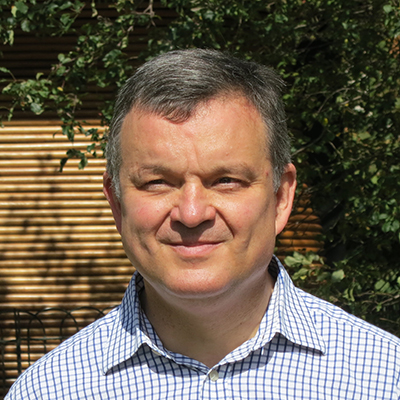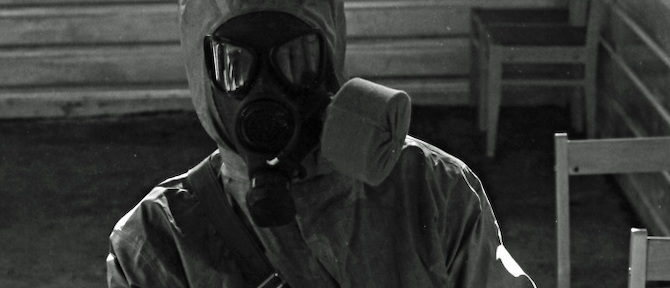The technical details of the history of chemical weapons stays largely unnoticed by the general public. Anniversaries such as the 100th anniversary of the first chemical attack on a battlefield, or the 25th anniversary of the first use of nerve agents in a terrorist attack pass completely unremarked. Few readers, if any, know those two incidents. And no, they are not Ypres or Tokyo. (Bolimów and Matsumoto, if you want to know.) Myths, half-truths, conspiracy theories, and misunderstandings abound in this field. “Mustard gas” isn’t even a gas, and has nothing to do with mustard. What was long referred to as “gas warfare” has, since about 1918, mostly involved liquids.
However, despite the lack of understanding of the finer points, chemical warfare somehow resonates in the public psyche. Of the many technological innovations in warfare – machine guns, airplanes, submarines, tanks – it was chemical weapons that were restricted in post-war treaties. Most of those other technologies (bar the Zeppelin airship) caught on and are omnipresent in modern warfare. It is hard to construct a moral argument saying that, somehow, being jabbed with a bayonet is somehow less moral and less ethical than being poisoned by phosgene. Yet, somehow, chemical weapons remain mostly beyond the pale. The Assad regime’s bombing of hospitals and bread queues in Syria with conventional munitions seems to get a blasé response. But somehow chemical weapons use becomes a (unenforced) “red line.” Why? This is a question I have asked and have been asked many times over the years.
The answer to “why?” is complicated. But surely part of the answer is because of the long shadow cast by chemical weapons. Much like landmines, chemical weapons bequeath after-effects that remain relevant long after any perceptible military value on a battlefield has passed. To this day, bombs with live chemical agent are occasionally exhumed along what was the Western Front in France and Belgium. And for many decades, nobody really knew what to do with chemical weapons that were excess to requirements, so they were literally dumped at sea. Many thousands of chemical bombs and artillery shells, perhaps millions, have been sunk in oceans around the world, for lack of viable disposal options after the World Wars. Some of them now sit astride the planned routes for new pipelines or indeed the proposed bridge to connect Scotland to Northern Ireland.
Although America stopped sinking its old chemical weapons in the sea a long time ago, it struggles to complete “demilitarisation” by other safer but more expensive means, and some old munitions are still in the queue for disposal at special plants in Colorado and Kentucky. The industrial component of the history of chemical weapons is full of health, safety, and environmental nightmares. In many cases, ingredients or by-products of chemical weapon production are more pernicious hazards than the Mustard or Sarin itself. These hazards are well-known and much research in some places (like Colorado), but covered up and ignored in other places, such as the former Soviet Union. The recent uses of so-called “Novichok” agents by Russian security services show that there is much to learn of the Soviet (and now Russian) chemical warfare legacy.
Perhaps the most important legacy of chemical weapons are the long-lasting medical and psychological effects of exposure. The “gas warfare” of the First World War killed far fewer people than most people believe (less than 100,000 of the many millions of battlefield deaths) but left visible scars and disabilities that all could see. Those unfortunate veterans are all dead now. But many thousands of veterans and civilian victims in Iran and Kurdistan are walking around today with similar scars and disabilities. There are people in Japan with long-term neurological and psychiatric effects from even just a single exposure to Sarin in 1995.
Long-term effects from nerve agent exposure are still not well-understood. But they appear in our newspapers today. Alexei Navalny, who cheated death recently from his exposure to a nerve agent, reports tremor and insomnia. An American soldier, likely an example, not an outlier, suffered years of poor mental health from exposure to Sarin from an old weapon in Iraq, as detailed in my book Toxic. We don’t know how well the Skripals are doing, but I suspect that they may not be in the peak of health. Detective Sergeant Nick Bailey, who received a lesser dose of the same poison as the Skripals, has just retired from the Wiltshire police for health reasons. One way or the other, chemical weapons are still with us.
Toxic | Hardback | July 2020 | £25 | 9781787383067 | 408pp
Image courtesy of © Hans de Vreij via flickr: ‘A soldier from the Soviet Army’s Chemical Warfare Troops demonstrating equipment’

Dan Kaszeta is a specialist defence and security consultant, who has held positions in the US Secret Service and the White House Military Office. A Royal Historical Society fellow, he is the author of The Forest Brotherhood; The Baltic States in the Second World War and Toxic (all published by Hurst).
